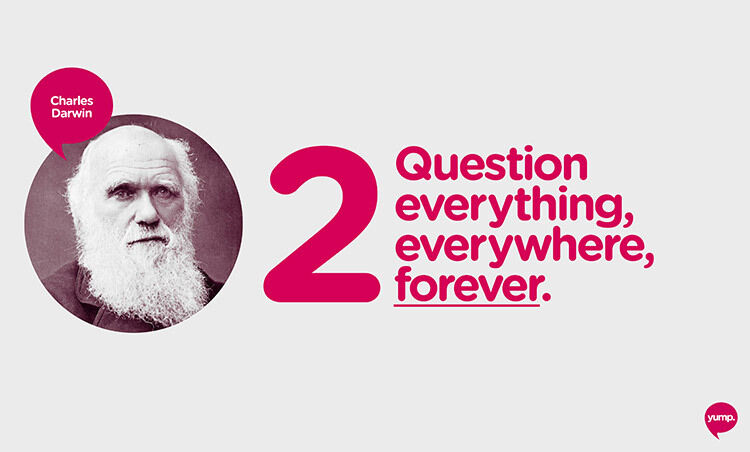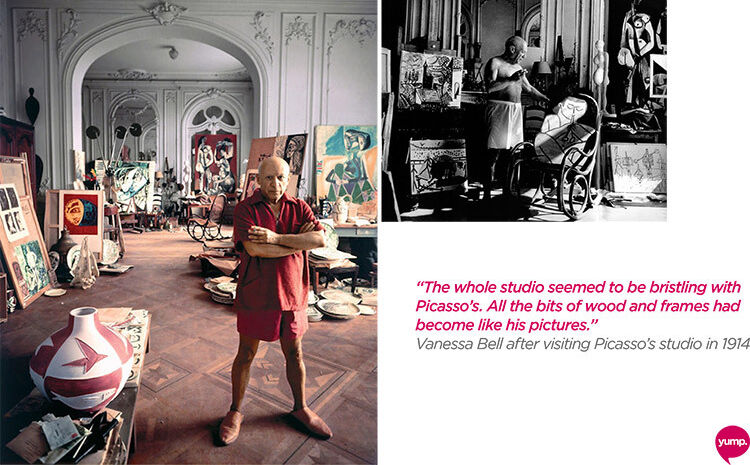Creativity is not a talent exclusive to artists and designers. It is in fact a skill everyone can learn, including people who see themselves as analytical.
Inspired by the book Change your mind by Rod Judkins, here we will share 10 habits of successful creative people and real-life case studies of how these have led to successful outcomes in the business, design and technology world.
This was originally a talk called "How to change your mind and build creative confidence" given at the Be Responsive Melbourne technology MeetUp held on May 13 at NAB, 700 Bourke St, Docklands. We have condensed the 30 minutes talk into two blog articles that can be digested easily by all our readers. This is part one - read on!
1. You are what you think you are.
Archetype: Andy Warhol

American artist Andy Warhol, a leading figure of the 1950s pop art movement, had his early works criticised as superficial and obvious. His critics questioned if his paintings could be deemed as art. But Warhol had the last laugh, selling a 1963 painting Silver Car Crash (Double Disaster) for US$105 million, the highest ever paid for his works. He never stopped believing that he was creative. This self-belief was a factor in why he became one of the most well-known and influential artists of the 20th century.
As English poet Sylvia Plath puts it, “the worst enemy to creativity is self-doubt.” Whatever we think is whatever we will be.
2. Question everything, everywhere, forever.
Archetype: Charles Darwin / Steve Jobs

English naturalist Charles Darwin was able to produce overwhelming evidence in support of the theory of evolution because he had the courage to question the established sciences and authorities of his time. To think in a creative and innovative way, we can’t be led by others. If something is assumed to be true, the creative will question the assumption and use their own methods to verify it.
“Everything around you that you call life, was made up by people that were no smarter than you. And you can change it, you can influence it, you can build your own things that other people can use,” Apple co-founder Steve Jobs once said. Jobs often questioned if products could be designed and built better, and in the process spearheaded some of the most innovative consumer products ever developed by mankind.
3. If you can’t find a way, make one.
Archetype: Claude Monet and the Impressionists / Zurb

After being repeatedly rejected by France’s official art show, the Salon de Paris, the Impressionists, led by French painter Claude Monet, staged their own exhibitions beginning in 1874. Their first exhibition was ridiculed by critics and the general public, who judged their art as too fluffy and sketchy to be taken seriously. But by the 1890s, their style had become influential and were frequently adopted in mainstream Salon art selected by the official French art institution.
Having a strong self-belief will have the power to carry you through down times. Don’t let the critics change your mind. Let what you do change theirs.
Zurb is a design agency based in California who is best known in the digital industry for being the makers of Foundation, a responsive front-end framework used by designers, developers and digital agencies all over the world. Not many people know that they also make a range of other digital tools, products and apps, from creating better design presentations for clients to facilitating feedback on chunks of code between developers. Yump's digital strategy team here in Melbourne has benefited immensely from their innovative products and knowledge.
Zurb is a leading creative thinker because they are often not satisfied with using an existing product to solve their problems. They make their own solutions.
4. Don’t leave ideas in your head.
Archetype: Leonardo Da Vinci

Ideas come and go, so it’s important to note them down when inspiration strikes. The great Leonardo Da Vinci, creator of the world’s most famous painting, the Mona Lisa, was an avid sketcher and perfected the art of sketching in the 15th century. His notebooks, discovered many years after his death, contained brilliant and groundbreaking ideas, inventions and discoveries.
At Yump our team love sketching and teasing out our ideas and prototypes with pen and paper. Personally I carry a visual diary wherever I go, but notepads or electronic devices are just as effective. Does inspiration strike you in the shower? Fear not. There are waterproof notepads you can buy online for just $15.00.
5. Create your environment.
Archetype: Pablo Picasso

Spanish artist Pablo Picasso is well-known for having a studio environment bursting with creativity. After a visit to Picasso’s studio in 1914, English painter Vanessa Bell remarked that “the whole studio seemed to be bristling with Picasso’s. All the bits of wood and frames had become like his pictures.” Picasso was only 32 then, and much of his art have not been seen by the wider public. Bell wrote in a private letter, “I came to the conclusion that he is probably one of the greatest geniuses that has ever lived.”
Creating the right environment will help you create the right state of mind. It is easier to produce creative work if you are working in an environment where you enjoy spending time. This is why many agencies in the creative field, digital agency included, invest in creatively designed spaces to set up more productive environments for their staff.

That said, you don’t need expensive fitouts to make your environment creative and intellectually stimulating. As exemplified by the summer house used by Mark Zuckerberg and the Facebook team in the summer of 2004, one year before the company picked up millions in investment, you can turn a humble home into a pleasurable environment that allows you to produce higher quality work in less time.
(The same house is used by a different start-up team called Amicus in the picture above.)
You can download the full presentation slides here. Awarded "Top Presentation of the Day" by SlideShare on May 21, 2014.
Continue reading part two here.
By Yuan Wang
Yuan is Creative Director and co-founder of Melbourne digital agency Yump. His core experience includes facilitating digital strategy workshops and art-directing digital marketing campaigns, cross-platform solutions, responsive websites and mobile apps. Career highlights include industry recognition from Create Awards, AIMIA Awards, FWA.com and AIPP Australian Professional Photography Awards. He is also passionate about user-centred designs, collaborative design workshops and agile principles.









